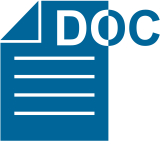PROSPEK MIGAS PADA CEKUNGAN JAWA TIMUR DENGAN PENGAMATAN METODE GAYABERAT
Abstract
Anomali Bouguer didaerah Cekungan Jawa Timur dapat di kelompokkan kedalam (3) tiga bagian yaitu: a. Anomali gayaberat tinggi dari kisaran 20 mGal hingga 60 mGal membentuk tinggian batugamping. b. Anomali gayaberat sedang dari kisaran 0 mGal hingga 20 mGal dibentuk oleh cekungan batuan sedimen. c. Anomali gayaberat rendah dari kisaran 0 mGal hingga – 50 mGal dibentuk oleh rendahan Zona Kendeng. Tinggian antiklin yang terkait dengan migas terbentuk pada dua jalur yaitu Zona Rembang di utara dan Zona Randublatung di selatan. Anomali 5 mGal hingga 37 mGal pada anomali sisa dianggap prospek sedangkan < dari 5 mGal kurang prospek. Batuan reservoir terbentuk pada rapat massa 2,7 gr/cm³ dari batugamping Formasi Kujung bagian atas, Formasi Ngimbang bagian atas dan batupasir Ngrayong bagian atas hingga Formasi Ledok dan Formasi Lidah. Ketebalan batuan reservoir terbentuk antara ± 800 hingga 1100 meter pada kedalaman ± 1500 hingga 2500 meter.Batuan induk terbentuk pada anomali 0 mGal hingga – 35 mGal di Cekungan Lamongan dan Rembang dari serpih terestrial Formasi Ngimbang Bawah, Kujung Bawah dan Formasi Tawun. Batuan alas diperkirakan disusun oleh Kompleks Melange terdiri atas batuan metamorf dan batuan beku mempunyai rapat massa 2,9 gr/cm³ dengan kedalaman yang bervariasi akibat pematahan bongkah pada batuan alas.
Downloads
References
Abdul, M., Irfan, M., Sopandi, T., 2005. Between Reality and Illusion, Hidrocarbon Hunting in East Java Basin. Proceedings Joint Convention Surabaya 2005 HAGI-IAGI PERHAPI The 30 th HAGI, The 34 th IAGI and The 14 th PERHAPI Annual Conference and Exhibition, pp 48-56.
Conoco., 1983. Merpati-1 final well report (unpublished).
Mujahidin, N., 2010. Analisis Petroleum System dan Potensi Eksplorasi Pengembangan Lapangan Migas Baru di Cekungan Jawa Timur, Lokakaria Badan Geologi-BP MIGAS –DINAS ESDM, Surabaya, 22-23 Juni 2010.
Maryanto, W., (2010). Kebijakan dan Manajemen Eksplorasi di Indonesia, Lokakaria Badan Geologi-BPMIGAS –DINAS ESDM, Surabaya, 22-23 Juni 2010.
Peter, L., (1991). The Neogene Geological History of East Java Some Unusual Aspects Of Stratigraphy. Proceedings Indonesian Assosiation of Geologists (IAGI), Twentieth Anmnual Convention , December 1991 pp. 26-36.
Syarif, N., Suhariono., Subagio., 1994. Peta Anomali Bouguer Lembar Surabaya, Jawa Pusat Survei Geologi Bandung, Skala 1 : 100.000.
Satiana , A. H., 2010. Optimalisasi Sumberdaya Hidrokarbon Di Cekungan Sedimen Jawa Timur. Lokakaria Badan Geologi-BP MIGAS –DINAS ESDM, Surabaya Juni 22-23- 2010.
Situmorang, B., Siswoyo, Thayib, S., 1976. Wrench Fault Tectonics and Aspects of Hydrocarbon Accumulation in Java. Proc. 5th. Ann. Conv. IPA, p.53-67.
Simon Hutubessy., 2005. Laporan Penelitian Konfigurasi Batuan Dasar Didaerah Cepu dan sekitarnya Jawa Tengah - Jawa Timur, Pusat Survei Geologi Bandung.
Untung, M., Seto, Y., 1978. Gravity and geological study in Java, Indonesia. Geological Survey of Indonesia and Japan, Spec. Publ. 5.
Copyright (c) 2019 Buletin Sumber Daya Geologi

This work is licensed under a Creative Commons Attribution-NonCommercial-ShareAlike 4.0 International License.
Authors whose manuscripts are published agree to the following terms:
The publication rights of all journal manuscript materials published on the Buletin Sumber Daya Geologi website are held by the editorial board with the knowledge of the author (moral rights remain with the manuscript’s author).
The formal legal provisions for access to digital articles in this electronic journal are subject to the terms of the Creative Commons Attribution-ShareAlike (CC BY-SA) license. This means that Buletin Sumber Daya Geologi has the right to store, convert media/formats, manage in the form of a database, maintain, and publish the article without requesting permission from the author, as long as the author’s name is cited as the copyright holder.
Manuscripts published in both print and electronic formats are open access for educational, research, investigative, and library purposes. Beyond these purposes, the editorial board is not responsible for any violations of copyright law.















